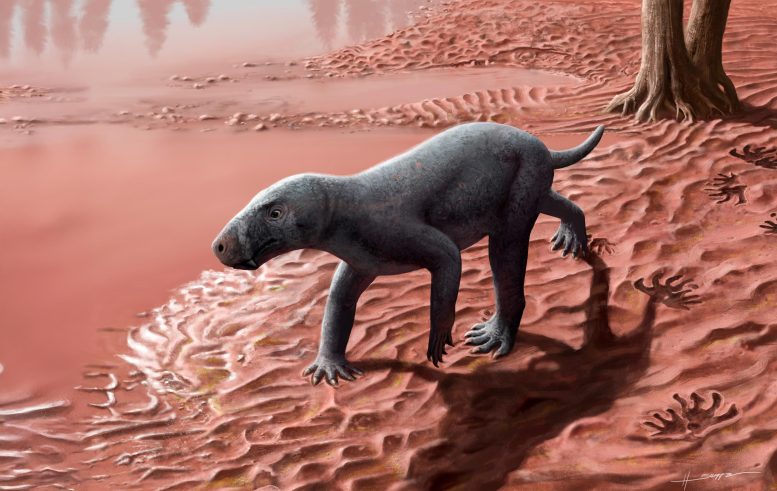Many recent studies assume that elderly people are at particular risk of dying from extreme heat as the planet warms. A new study of mortality in Mexico turns this assumption on its head: it shows that 75% of heat-related deaths are occurring among people under 35―a large percentage of them ages 18 to 35, or the very group that one might expect to be most resistant to heat.
“It’s a surprise. These are physiologically the most robust people in the population,” said study coauthor Jeffrey Shrader of the Center for Environmental Economics and Policy, an affiliate of Columbia University’s Climate School. “I would love to know why this is so.” The research appears this week in the journal Science Advances.
The researchers chose Mexico for the study because it collects highly granular geographical data on both mortality and daily temperatures. The researchers reached their conclusions by correlating excess mortality―that is, the number of deaths above or below the average―with temperatures on the so-called wet-bulb scale, which measures the magnified effects of heat when combined with humidity.
The analysis found that from 1998 to 2019, the country suffered about 3,300 heat-related deaths per year. Of these, nearly a third occurred in people ages 18 to 35―a figure far out of proportion with the numbers in that age bracket. Also highly vulnerable: children under 5, especially infants. Surprisingly, people 50 to 70 suffered the least amount of heat-related mortality.

Based on this, “we project, as the climate warms, heat-related deaths are going to go up, and the young will suffer the most,” said the study’s co-lead author, R. Daniel Bressler, a PhD. candidate in Columbia’s Sustainable Development program.
The researchers say several factors may be at work. Young adults are more likely to be engaged in outdoor labor including farming and construction, and thus more exposed to dehydration and heat stroke. The same goes for indoor manufacturing in spaces that lack air conditioning. “These are the more junior people, low on the totem pole, who probably do the lion’s share of hard work, with inflexible work arrangements,” said Shrader. Young adults are also more likely to participate in strenuous outdoor sports, the researchers point out. A previous separate analysis by Mexican researchers showed that death certificates of working-age men were more likely to list extreme weather as a cause than those of other groups.
The vulnerability of infants and small children came as somewhat less of a surprise. It is already known that their bodies absorb heat quickly, and their ability to sweat, and therefore cool off, is not fully developed. Their immune systems are also still developing, which can make them prey to ailments that become more common with humid heat, including vector-borne and diarrheal diseases.
Wet bulb temperatures are often converted by popular media into “real-feel” heat indexes on the Fahrenheit scale, where numbers can vary depending on the exact combination of heat and humidity. According to the study, wet-bulb temperatures of around 13 C (equivalent to 71 F with 40% humidity) are ideal for young people; in this range, they suffer minimum mortality. Previous research has suggested that workers begin to struggle when wet-bulb temperatures reach about 27 degrees C, which would equate to 86 to 105 F, depending on humidity. However, the new study found that the largest number of deaths occurred at wet-bulb temperatures of just 23 or 24 C, in part because those temperatures occurred far more frequently than higher ones, and thus cumulatively exposed more people to dangerous conditions.
Using the same daily temperature and mortality data, the researchers found that elderly people died predominantly not from heat, but rather modest cold. (Mexico is mainly tropical and subtropical, but has many climate zones including high-elevation areas that can get relatively chilly.) Among other things, older people tend to have lower core temperatures, making them more sensitive to cold. In response, they may be prone to staying indoors, where infectious diseases spread more easily.
Despite all the attention given to the dangers of global warming, extensive research has revealed that cold, not heat, is currently the world’s number one cause of temperature-related mortality, including in Mexico. However, the proportion of heat-related deaths has been climbing since at least 2000, and this trend is expected to continue.
The new study has global implications, say the researchers. Mexico is a middle-income country; by share of population under 35, it is about average, and some 15% of workers are employed in agriculture. By contrast, many poorer, hot countries, mainly in Africa and Asia, have much younger populations that work in manual labor at much higher percentages. Thus, if Mexico is any indicator, heat-related mortality in those nations could be massive. A study published last year showed that farmworkers in many poor countries are already planting and harvesting amid increasingly oppressive heat and humidity.
Bressler said the team is now looking to firm up its conclusions by expanding its research into other countries, including the United States and Brazil.
The study was co-led by Andrew Wilson of Stanford University. Coauthors include Cascade Tuholske of Montana State University; Colin Raymond of the University of California, Los Angeles; Patrick Kinney of Boston University, Teresa Cavazos of the Centro de Investigación Científica y de Educación Superior de Ensenada, Baja California; and Catherine Ivanovich, Radley Horton and Adam Sobel of the Columbia Climate School.










Leave a Comment